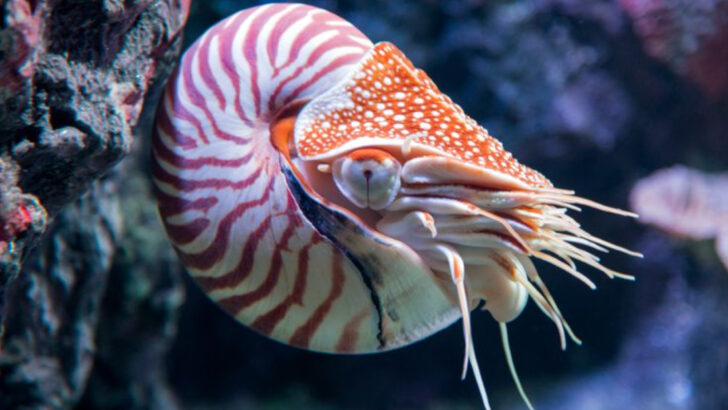Some animals didn’t just survive the dinosaurs—they outlived them. While T. rex and Triceratops vanished, these creatures kept crawling, swimming, and soaring right into the present day. They watched the world change around them and kept going, almost unchanged for millions of years. From armored reptiles to ancient swimmers, these survivors carry the fingerprints of prehistoric Earth. They’re not just old—they’re living fossils. Meet 14 animals that once shared the planet with dinosaurs—and are still here, defying time itself.
Horseshoe Crab
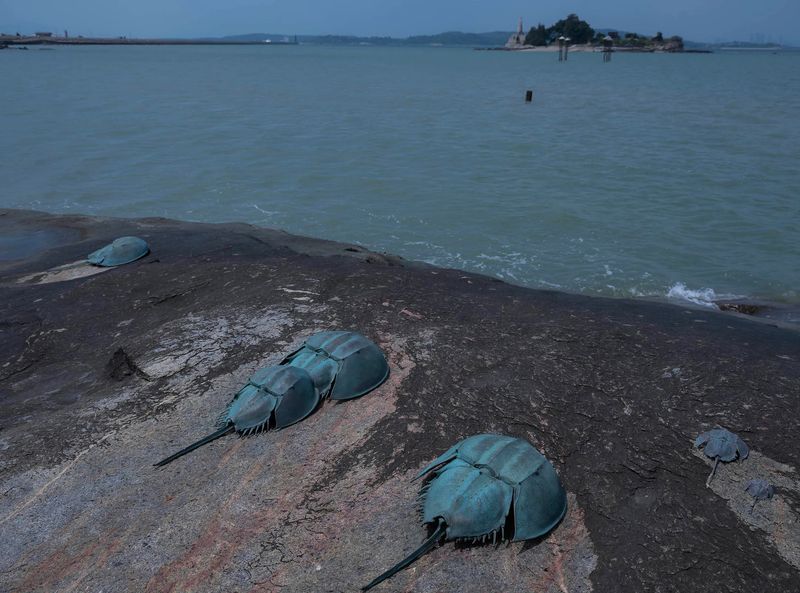
With an anatomy that has remained unchanged for millions of years, the horseshoe crab is a true relic of the past. This ancient creature, often mistaken for a crustacean, is more closely related to spiders. Its hard, armor-like shell and tail spine make it instantly recognizable.
Found along the shores of North America and Asia, the horseshoe crab plays a crucial role in coastal ecosystems and biomedical research. Its blue blood contains unique properties that are invaluable in detecting bacterial contamination in medical equipment.
Did you know? The horseshoe crab has survived multiple mass extinctions, making it one of the oldest living species.
Crocodile

Few animals evoke the primal fear that a crocodile does. These formidable predators have been around for over 200 million years, witnessing the rise and fall of dinosaurs. With their armored skin and deadly jaws, crocodiles are master hunters, lurking beneath the water’s surface for unsuspecting prey.
Found in tropical regions worldwide, they play a vital role in aquatic ecosystems by controlling fish populations. Despite their fearsome reputation, crocodiles are essential for balancing the food chain in their habitats.
Interestingly, crocodiles can live up to 70 years, making them one of the longest-living reptiles.
Tuatara
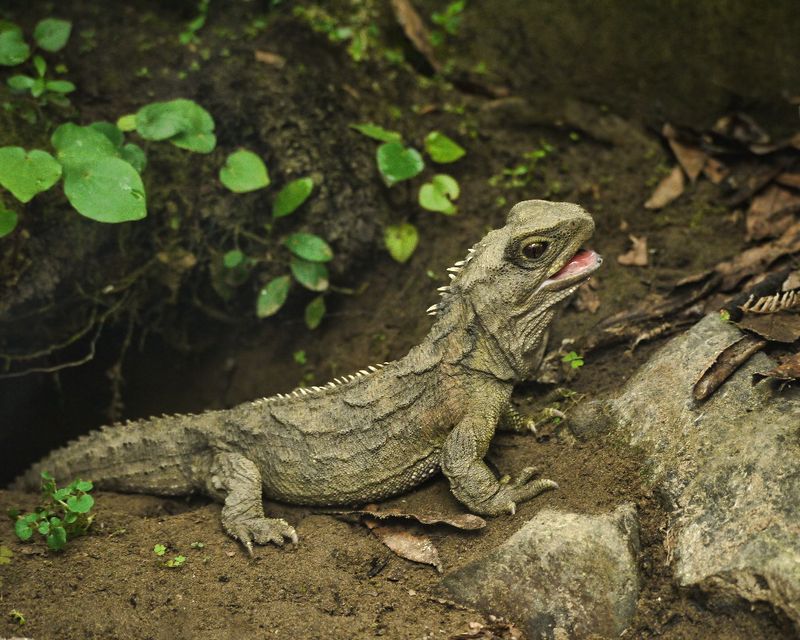
The tuatara might look like a lizard, but it belongs to a distinct lineage that dates back to the age of dinosaurs. Native to New Zealand, this unique reptile has a third ‘parietal eye’ on its forehead, a remnant of its ancient ancestry.
Tuatara are often considered living fossils due to their unchanged features over millions of years. Their slow metabolism and ability to survive in cold temperatures are remarkable adaptations.
Did you know? Tuataras can live over 100 years, and they continue to grow throughout their lifetime, a rare trait among reptiles.
Coelacanth
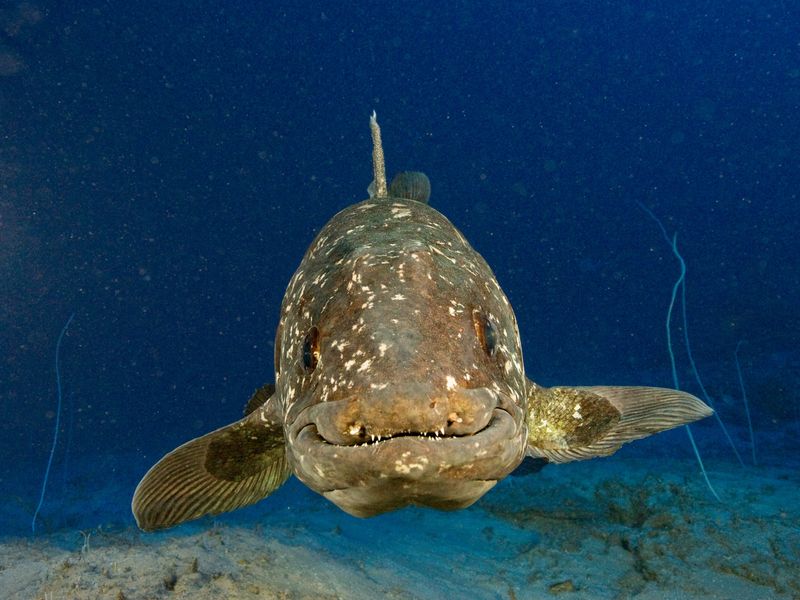
Once thought to be extinct, the coelacanth surprised scientists when it was rediscovered in 1938 off the coast of South Africa. This lobe-finned fish dates back to the time of the dinosaurs, with fossils over 360 million years old.
Known for its unique limb-like fins, the coelacanth provides insight into the evolution of land vertebrates. Its deep-sea habitat and elusive nature add to its mystique.
Fun fact: The coelacanth’s heart functions differently from that of most fish, contributing to its survival in the deep ocean’s low-oxygen environment.
Sturgeon
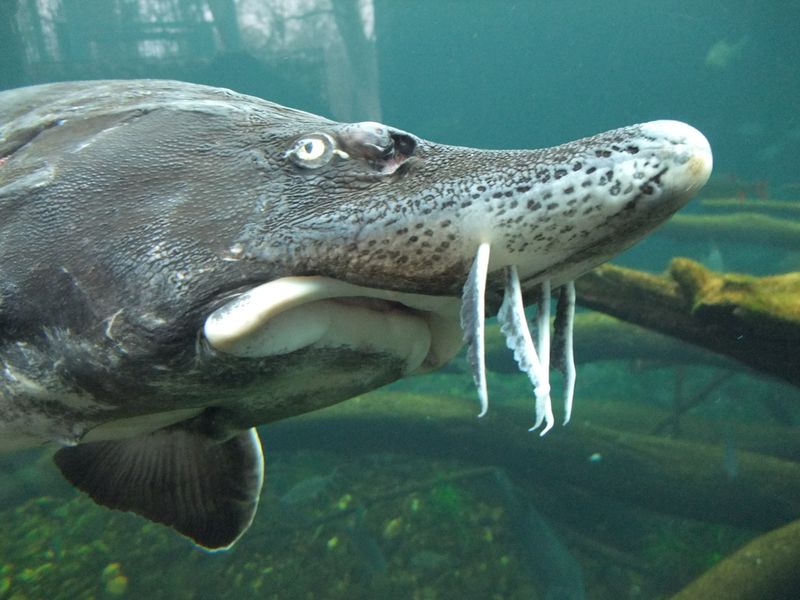
A true giant of the waterways, the sturgeon has been swimming our rivers since the time of the dinosaurs. These ancient fish are famous for their size, with some species growing over 20 feet long.
Sturgeons are highly sought after for their roe, which is processed into caviar, making them economically significant. Their distinctive bony plates and long lifespan make them fascinating subjects for study.
Unfortunately, overfishing and habitat loss have led to the decline of sturgeon populations, prompting conservation efforts worldwide.
Platypus
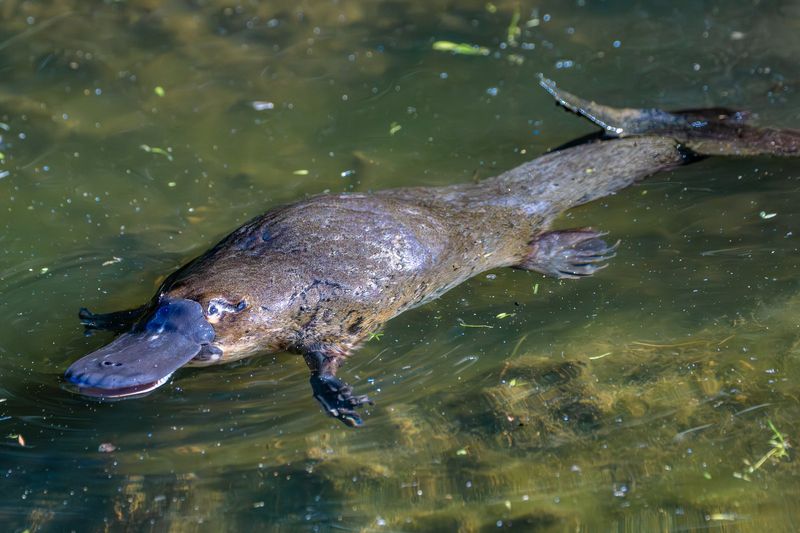
The platypus defies categorization, embodying a blend of traits from mammals and reptiles. This egg-laying mammal traces its lineage to the time of dinosaurs and is native to eastern Australia.
With its webbed feet, duck-bill, and otter-like body, the platypus is perfectly adapted to an aquatic lifestyle. Its unique reproductive method and electrolocation abilities make it a subject of scientific curiosity.
Interestingly, male platypuses possess venomous spurs on their hind legs, a rare trait among mammals, adding another layer to their intriguing nature.
Sea Turtle
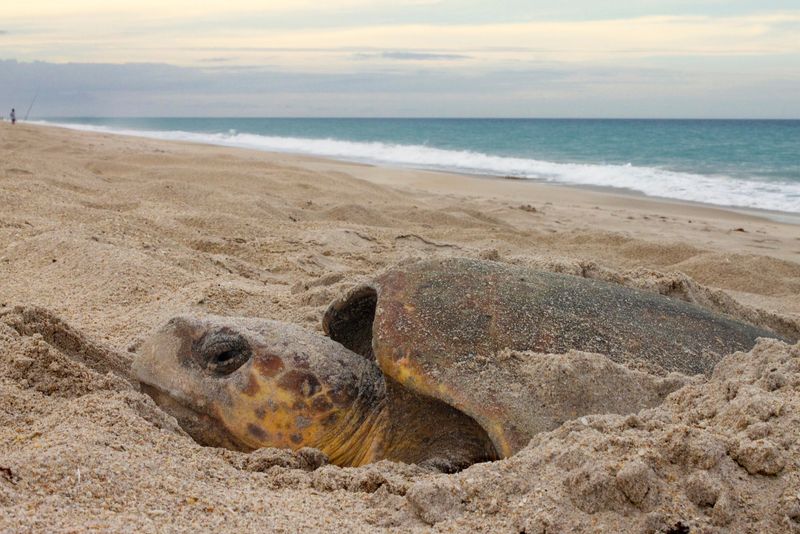
Majestic and serene, sea turtles have graced our oceans for over 100 million years. These ancient mariners traverse vast distances, returning to the shores where they hatched to lay eggs of their own.
With their streamlined bodies and flipper-like limbs, sea turtles are built for long journeys. They play a vital role in marine ecosystems, maintaining healthy seagrass beds and coral reefs.
Fun fact: Female sea turtles can store sperm from multiple males, ensuring genetic diversity in their offspring.
Nautilus
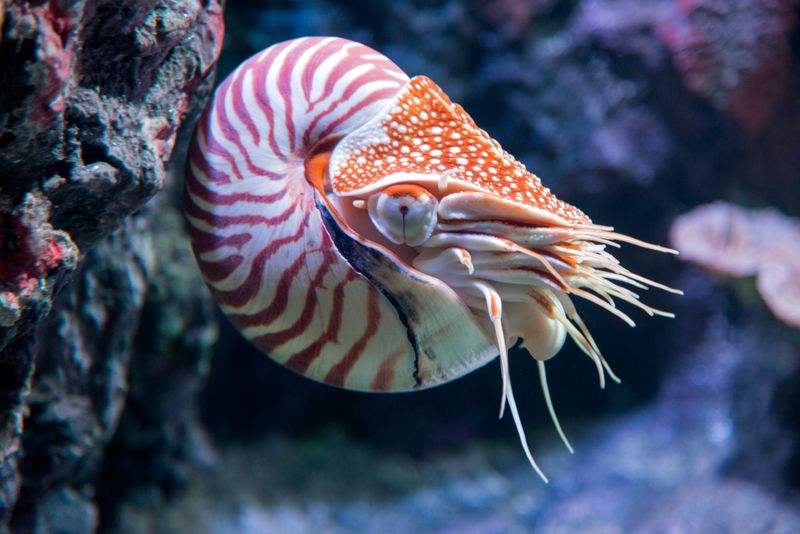
The nautilus, with its beautiful spiral shell, is a symbol of the ancient seas. This cephalopod has remained relatively unchanged for millions of years, embodying a perfect blend of form and function.
Living in the Indo-Pacific region, the nautilus uses jet propulsion to navigate the ocean depths. Its chambered shell helps control buoyancy, making it a master of deep-sea exploration.
Did you know? Nautiluses can live up to 20 years, longer than most other cephalopods, adding to their allure as living fossils.
Ginkgo Tree

While not an animal, the ginkgo tree deserves mention as a living fossil from the Jurassic period. Its fan-shaped leaves and resilience have made it a favorite in urban landscapes worldwide.
The ginkgo is unique among trees for its ability to survive pollution and environmental stress, thriving where many other species cannot. Its seeds and leaves are used in traditional medicine.
Interestingly, ginkgo trees have no close living relatives, making them a fascinating subject of botanical study.
Lamprey
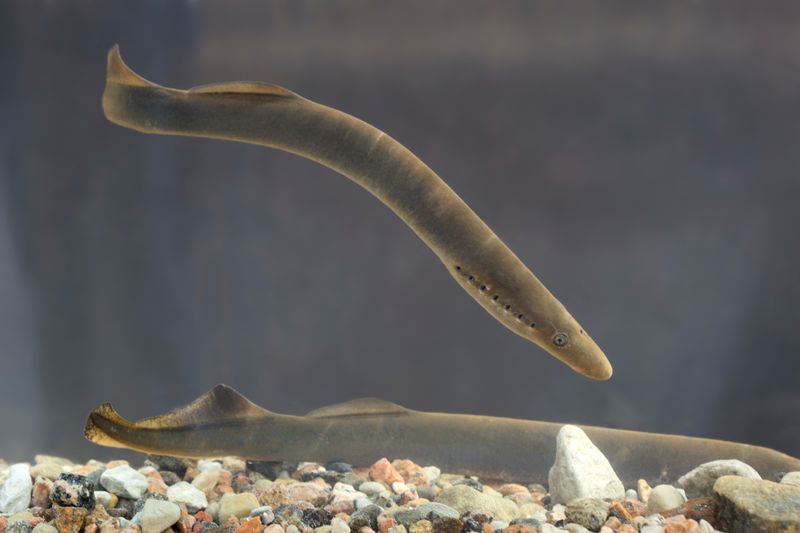
The lamprey, with its eel-like appearance and jawless mouth, is a true survivor of the ages. This parasitic fish has existed for over 360 million years, predating many modern fish species.
Lampreys are unique for their life cycle, which includes a long larval stage in freshwater before migrating to the sea. Their feeding habits involve attaching to other fish and feeding on their blood.
While often considered pests, lampreys play a significant role in aquatic ecosystems by controlling fish populations.
Cockroach
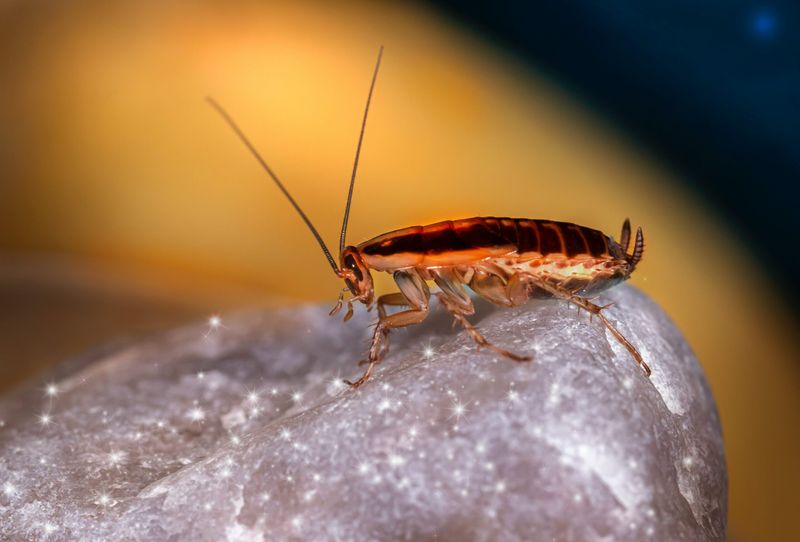
Few creatures inspire more simultaneous admiration and disgust than the cockroach. These resilient insects have crawled the earth for over 300 million years, adapting to countless changes in environment.
Known for their hardiness, cockroaches can survive extreme conditions, making them persistent pests. However, they are essential for breaking down organic matter, contributing to nutrient cycling in ecosystems.
Did you know? Some cockroach species can live without food for a month, showcasing their incredible survival skills.
Jellyfish
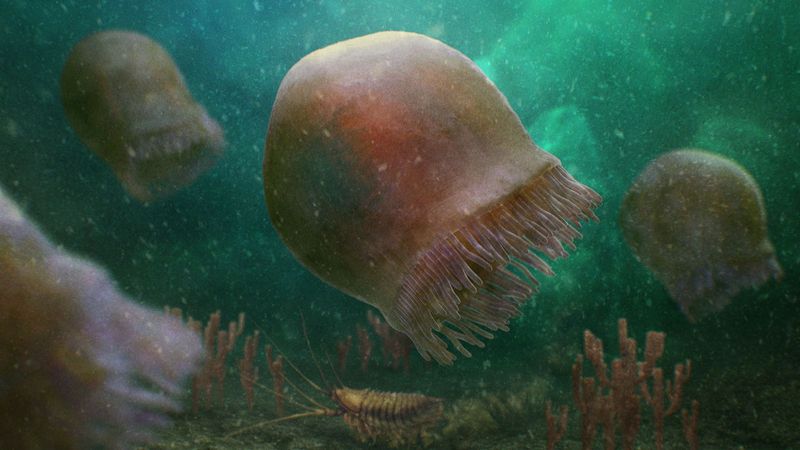
Jellyfish have pulsed through our oceans for over 500 million years, their translucent bodies and trailing tentacles creating a mesmerizing sight. These gelatinous creatures lack a brain, heart, and bones, yet they thrive in every ocean on earth.
They play a crucial role in marine food webs, serving as both predator and prey. Their stinging cells are a unique adaptation for capturing small fish and plankton.
Interestingly, some jellyfish species can revert to their juvenile form, effectively becoming biologically immortal under certain conditions.
Shark
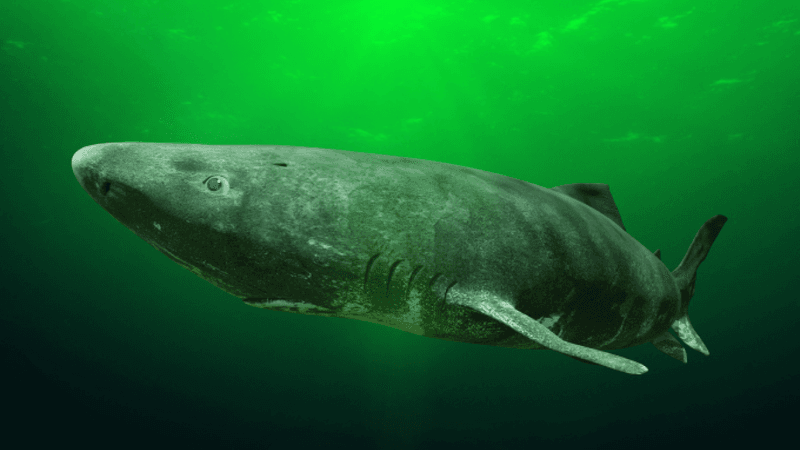
With a lineage dating back over 400 million years, sharks are among the ocean’s oldest and most effective predators. Their streamlined bodies and keen senses make them formidable hunters in diverse marine environments.
Sharks are essential for maintaining healthy ocean ecosystems by keeping prey populations in check. Their varied species range from the gentle whale shark to the fierce great white.
Did you know? Sharks’ teeth are embedded in their gums rather than directly attached to their jaws, allowing them to constantly replace lost teeth, ensuring they never go toothless.

